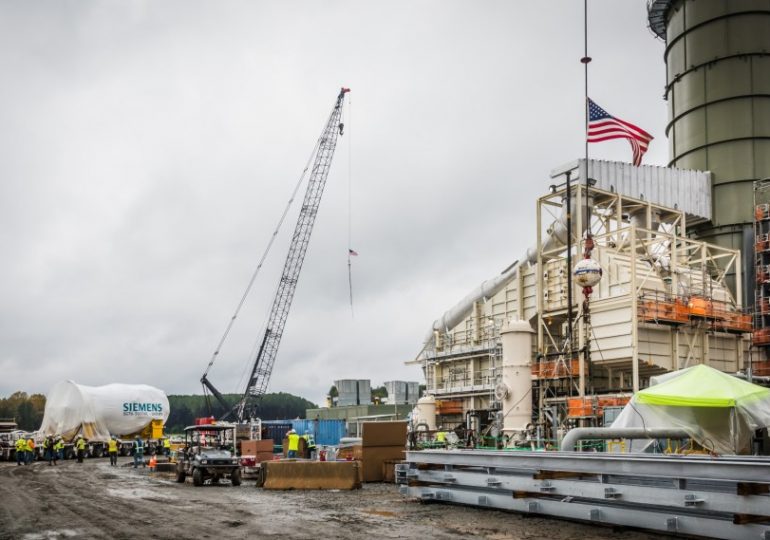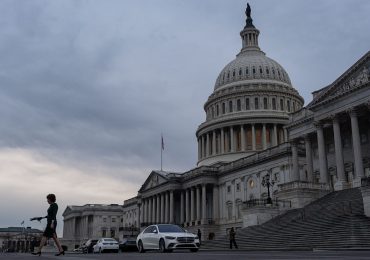An array of critics came out swinging in January when Duke Energy first filed its plans in North Carolina for one of the largest fossil fuel investments in the country.
But as the months have dragged on in the development of the company’s biennial carbon-reduction plan, some notable detractors have relented.
Just before expert witness testimony was set to begin in Raleigh late last month, the state-sanctioned ratepayer advocate, Public Staff, and Walmart endorsed a settlement with Duke on its blueprint, which includes building 9 gigawatts of new natural gas plants that the utility says could be converted to run on hydrogen in the future.
A few days later, the Carolinas Clean Energy Business Association, a consortium of solar and wind developers, announced it had signed on too.
The agreement, which contains some small concessions from the utility, led to low-key hearings that ended in less than two weeks. It makes it more likely that Duke will get what it wants from regulators by year’s end, including a greenlight, if not final approval, for three large new natural gas plants in the near term.
Chris Carmody, executive director of the Carolinas Clean Energy Business Association, says the proposed compromise also helps lock in forward progress on solar energy and batteries, however incremental.
“It’s a more aggressive solar spend. It’s a more aggressive storage spend,” he said. “Certainly, we would like to see more. But first of all, we like to see it going in the right direction.”
Clean energy advocates believe Duke’s push for new gas plants will harm the climate, since the plants’ associated releases of planet-warming methane will cancel out any benefits of reduced carbon pollution from smokestacks. At the same time, they say the investments could become useless by midcentury or sooner, before their book life is over, saddling ratepayers with costs that bring no benefits.
“There’s not much in it for their customers except unnecessary risk, cost, and more pollution,” Will Scott, southeast climate and clean energy director for the Environmental Defense Fund, wrote in a blog last month.
But Duke’s gas bubble has proved hard to burst. For one, the company’s predictions of massive future demand from new data centers are based in part on confidential business dealings that are challenging to rebut from the outside.
Unlike two years ago, when Duke proposed its first carbon reduction plan, no groups produced an independent model showing how Duke could meet demand without building new gas.
“We can talk about costs, or market conditions,” said Carmody. But, he said, “we did not do any modeling.”
Public Staff ran its own numbers and has urged more caution on new gas plants than Duke proposes. But the agency is unwavering that at least some are needed.
New Biden administration rules haven’t yet proved the death knell for gas that some expected. Duke is suing to overturn the rule, but it insists that building new plants that will run at half capacity is the most economical plan for compliance.
And even as Duke is proffering more gas, it’s also undeniably proposing more solar.
Clean energy backers still object to annual constraints on solar development the utility says are necessary. But the limits have increased from less than 1,000 megawatts per year in 2022 to over 1,300 megawatts. And the settlement would result in another 240 megawatts of solar than Duke had first proposed.
“It’s an iterative improvement,” said Carmody.
What’s more, the settlement opens a discussion with Duke about the scores of 5-megawatt solar projects across the state whose initial contracts will soon expire. A proposal for how to refit them could come in April of next year.
“This is a really important issue to our members,” said Carmody. “These are projects that could be repowered. They could be upgraded with storage. They could have significantly more efficient solar technology than was on them 15 or 20 years ago.”
Still, Carmody said his group tried to word the settlement in a way that left room for clean energy advocates to continue to advocate for less gas and steeper emissions cuts sooner — and that’s certainly their plan.
“Three power plants that will be really expensive to build and then operate for only a few years is just a ridiculous proposal,” the settlement notwithstanding, said Maggie Shober, research director for the Southern Alliance for Clean Energy.
“We remain hopeful that there’s a lot that the [commission] can do in this carbon plan proceeding and in their final order, to move us forward on a clean energy trajectory.”
Nick Jimenez, senior attorney for the Southern Environmental Law Center, acknowledges the settlement stacks the deck somewhat against his clients.
“Historically, the commission approves a lot of settlements,” he said. “It likes to see parties settle, especially when Duke and the Public Staff are involved.”
Former critics start to coalesce around Duke Energy’s plans for more gas, solar in N.C. is an article from Energy News Network, a nonprofit news service covering the clean energy transition. If you would like to support us please make a donation.
Leave a comment





